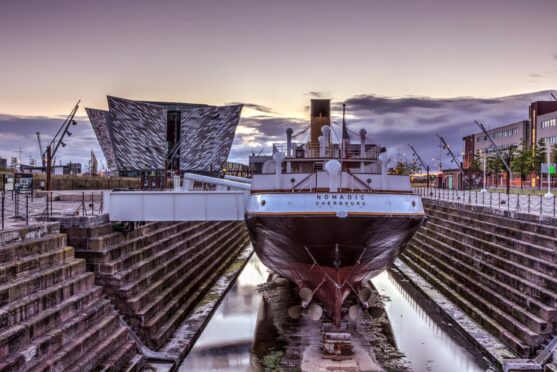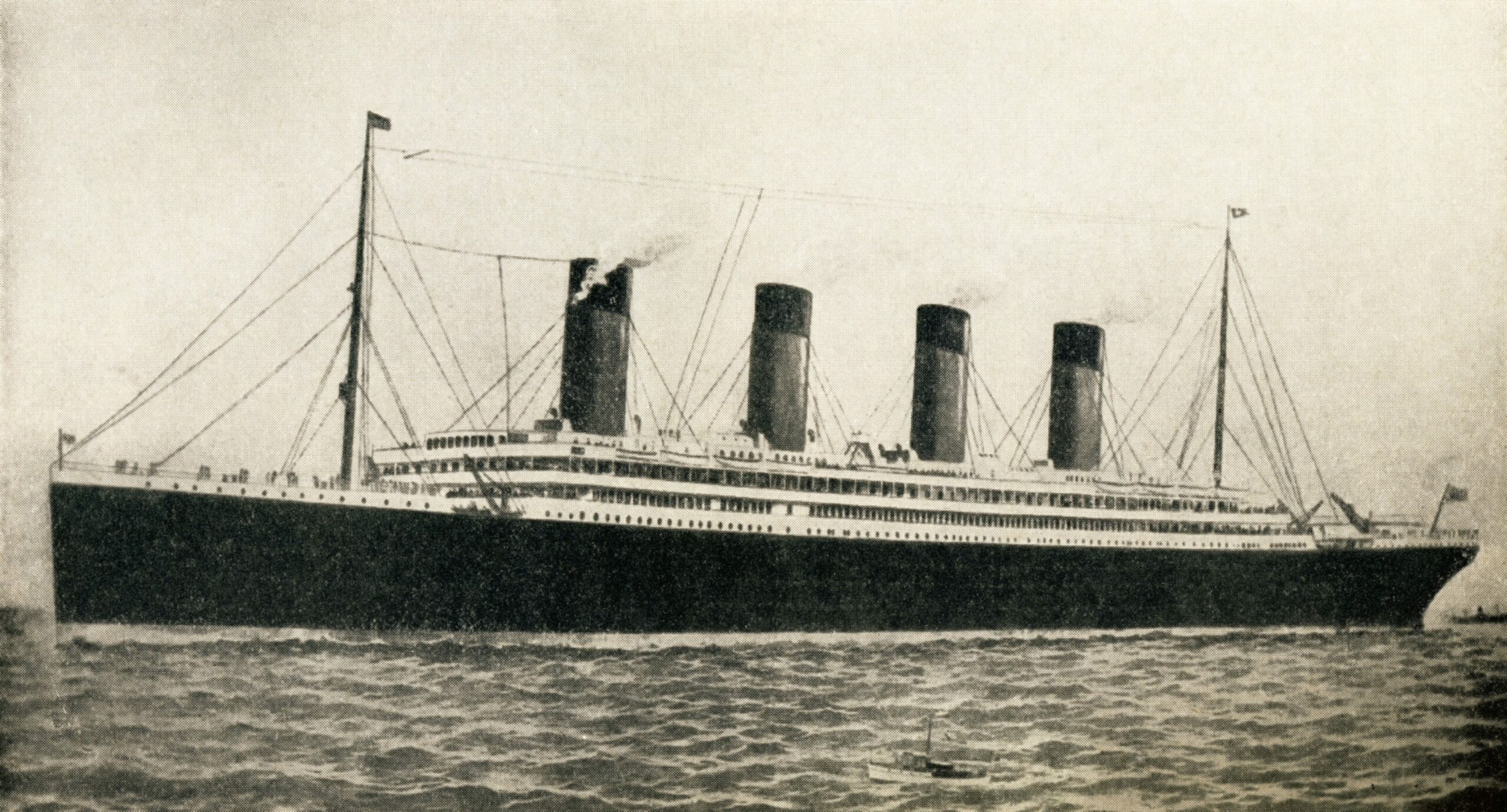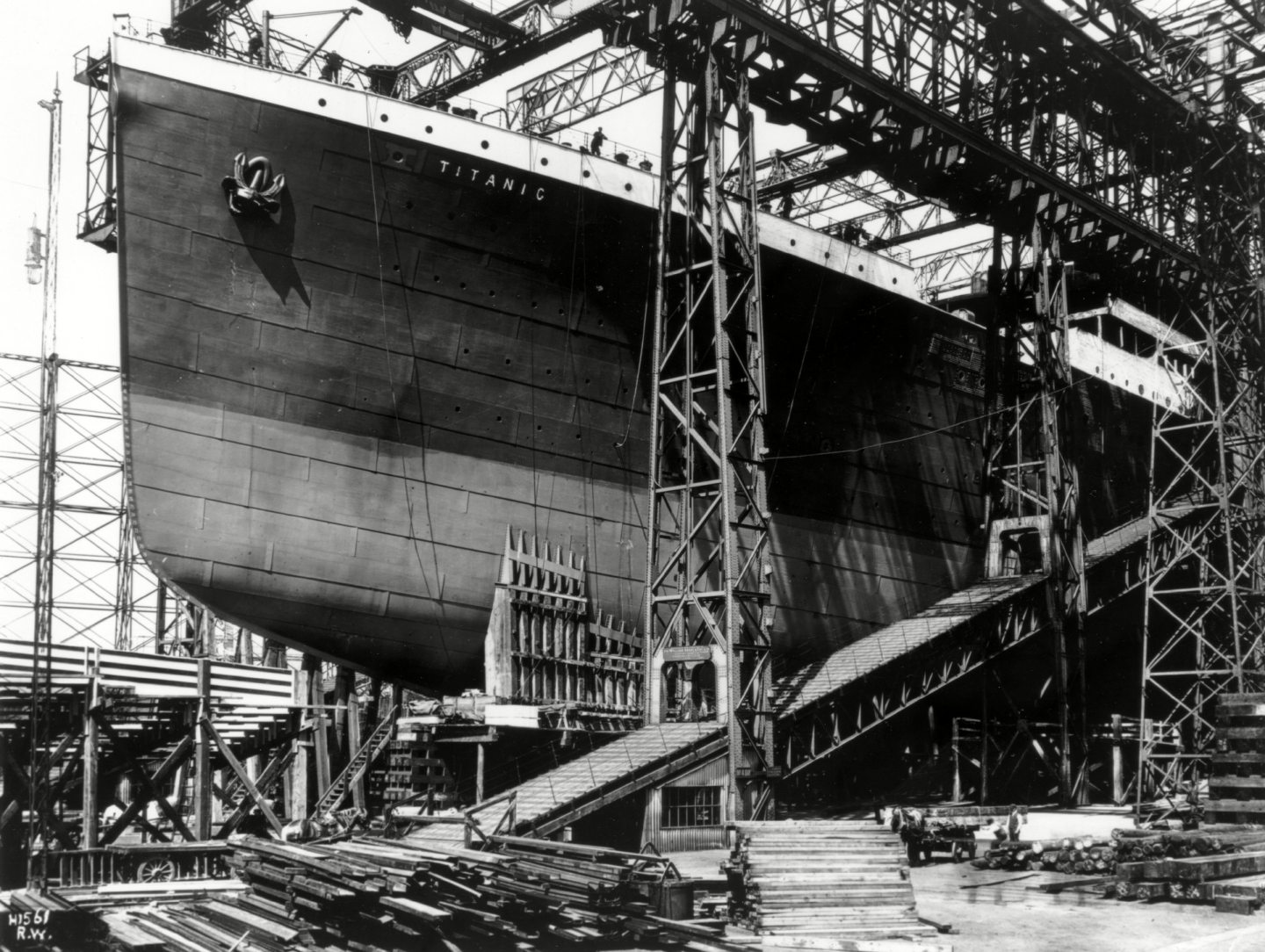
Told many times in books, theatre performances and movies, the story of the Titanic is one that is indelibly etched on people’s minds.
Belfast was already a ship-building powerhouse by 1909, when White Star Line appointed Harland & Wolff to build the vessel. In fact, before being formally named the ship was known as “number 401”.
The Titanic was planned to be one of the biggest and most opulent ships ever seen and deemed as unsinkable. First-class cabins would be the last word in luxury and would attract politicians, businessmen, bankers.
Some of the world’s richest and most influential people would go on to dine on 11-course meals in the stylish restaurant or Parisian café and stroll along the promenade decks before enjoying a Turkish Bath.
At the opposite end of the passenger list, third-class passengers were mainly immigrants heading to a new life in America, who had to eat much more meagrely and share facilities with others.
The Titanic Centre in Belfast is one of the island’s most popular attractions. Located next to the Titanic slipways and the former shipyard Drawing Offices, the centre is at the heart of where the Titanic was planned, designed, built and launched.
Visitors are able to gain in-depth knowledge about the liner and gain an understanding of the scale of the vessel from vantage points alongside and above the docks.
It took Belfast a long time to come to terms with the Titanic’s fate. The Titanic Centre was opened to mark the centenary of the sinking. The long gestation was due to a mixture of shame and embarrassment surrounding the ship’s tragic end.
For a long time, the city’s tour guides quipped “she was all right when she left here” but ultimately it was realised that other cities around the world such as Halifax, Nova Scotia and Orlando, Florida were telling a story, through exhibitions, that could really only be told properly in Belfast.
The planned, but ultimately ill-fated, maiden voyage was a much-trumpeted affair, leaving from Southampton and calling at Cherbourg and Cork (Cobh) before making the transatlantic crossing.
Cork
As a major port, 2.5 million Irish people departed from Cobh to emigrate to North America between 1848 and 1950. Passengers gathered at the White Star Line offices on the harbourside in Cobh on April 11, 1912 would have been making the journey for a variety of reasons.
Today, the building houses the Titanic Experience. Visitors are given a ticket with the name of one of those passengers in order to follow in their footsteps through the building and ultimately learn their fate.
The exhibition shows recreations of first and third-class cabins, houses some interesting artefacts, and tells the story of some of those onboard.
The village of Cobh is much the same as it was in 1912. The colourful buildings are overlooked by the majestic St Colmans Cathedral which was nearing completion around that time. The Rob Roy, opposite the White Star Line office, is one such place, which also became a focal point as news of the Titanic tragedy emerged.
Travel between Belfast and Cork is relatively simple nowadays, which makes a Titanic long weekend a possibility.
The cities are 260 miles apart but are connected by an excellent “traffic light free” motorway system, which bypasses all the towns and villages along the way.
Cork’s Metropole Hotel, which was already well established by the time Titanic called at the city’s harbour, perhaps inadvertently, but more than likely by design, offers guests the experience of the finer things in life; impeccable service, rich food and timeless elegance.
In Belfast, the Fitzwilliam Hotel offers luxurious rooms with lovely views across the city centre.
The famous City Hall, which has a Titanic memorial, and the iconic cranes of the Harland & Wolff shipyard are within your eyeline as you take in the views of the city.
P.S.
When visiting Cork, head to Fota Wildlife Park, where you’ll find spider monkeys, red pandas and giraffes. Some animals, such as ring-tailed lemurs and wallabies, roam freely among visitors.
Factfile
Aer Lingus and Easyjet operate flights from Edinburgh/Glasgow to Cork and Belfast respectively.

Enjoy the convenience of having The Sunday Post delivered as a digital ePaper straight to your smartphone, tablet or computer.
Subscribe for only £5.49 a month and enjoy all the benefits of the printed paper as a digital replica.
Subscribe © Design Pics Inc/Shutterstock
© Design Pics Inc/Shutterstock © Everett/Shutterstock
© Everett/Shutterstock